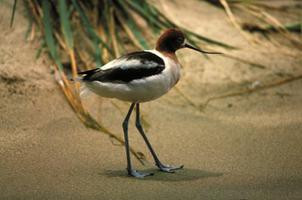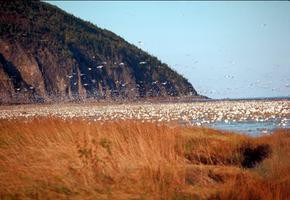 American Avocet in its breeding habitat in the Canadian prairies. The Canadian Wildlife Service works to protect migratory birds like the American Avocet.
American Avocet in its breeding habitat in the Canadian prairies. The Canadian Wildlife Service works to protect migratory birds like the American Avocet.
The Canadian Wildlife Service (CWS), a directorate within Environment Canada, stands as a cornerstone of wildlife conservation in Canada. Its origins trace back to 1917 with the Migratory Birds Convention Act, which assigned the federal government the critical task of safeguarding and managing migratory bird populations across the nation. This responsibility was initially handled by a small unit within the Department of the Interior, which later evolved into the Dominion Wildlife Service in 1947. In 1950, it was officially renamed the Canadian Wildlife Service, solidifying its identity and expanding mandate.
Today, the Canadian Wildlife Service is instrumental in enforcing key pieces of legislation designed to protect Canada’s natural heritage. These include the Canada Wildlife Act, the Species at Risk Act, the Migratory Birds Convention Act, and the Wild Animal and Plant Protection and Regulation of International and Interprovincial Trade Act (WAPPRIITA). WAPPRIITA serves to implement the Convention on International Trade in Endangered Species of Wild Fauna and Flora (CITES), further demonstrating the Canadian Wildlife Service’s commitment to global conservation efforts.
The Canadian Wildlife Service strategically focuses its efforts across three core areas, directly reflecting its legislative responsibilities: migratory birds, species at risk, and habitat preservation. To achieve its comprehensive mandate, the Canadian Wildlife Service engages in a diverse range of activities. These include the development of policies and regulations, the implementation of collaborative conservation partnership programs, the creation and execution of species at risk protection and recovery plans, diligent monitoring of wetlands and other critical habitats, and the administration of wildlife permits.
 Cap Tourmente National Wildlife Area in Quebec, a vital habitat protected by the Canadian Wildlife Service. This area is crucial for migrating Greater Snow Geese.
Cap Tourmente National Wildlife Area in Quebec, a vital habitat protected by the Canadian Wildlife Service. This area is crucial for migrating Greater Snow Geese.
Recognizing the importance of protected areas, the Canadian Wildlife Service has established over 50 national wildlife areas under the Canada Wildlife Act. These areas are vital sanctuaries designed to conserve crucial wildlife habitats. Furthermore, more than 90 nesting areas have been designated as migratory bird sanctuaries, offering safe havens for these vulnerable populations. The Canadian Wildlife Service also spearheads various migratory bird monitoring programs to track population trends and inform conservation strategies. It plays a key role in setting hunting regulations for migratory birds to ensure sustainable practices. Moreover, the Canadian Wildlife Service leads the development of recovery planning initiatives for terrestrial species at risk throughout Canada, working to reverse declines and secure the future of vulnerable wildlife populations.
In conclusion, the Canadian Wildlife Service plays an indispensable role in the protection and management of Canada’s diverse wildlife and habitats. Through its legislative mandate, strategic focus, and wide-ranging activities, the Canadian Wildlife Service remains dedicated to conserving Canada’s natural heritage for future generations.